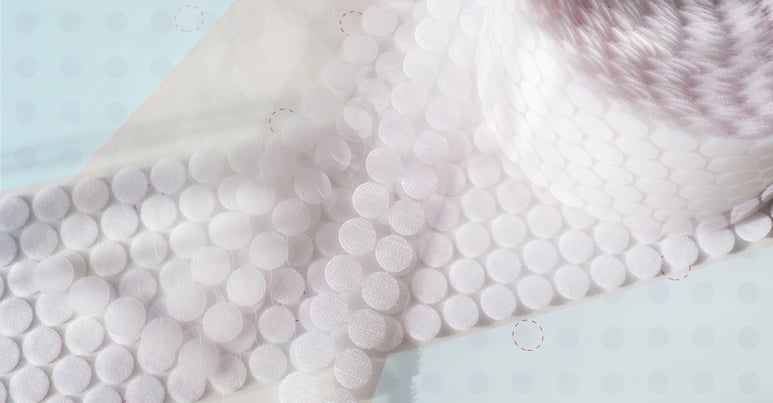When it comes to adhesives, here are some ways to help you get the best bond.
Posted on Tue, Sep 13, 2022

When it comes to flexible reclosable fasteners, foams, single-sided tapes, and double-sided tapes, choosing the right adhesive to bond to a substrate is a critical decision. With pressure-sensitive adhesives (PSAs), you simply apply pressure to the adhesive to stick it to the substrate. Different adhesives have different adhesion properties for a variety of conditions, including moisture, humidity, temperature, and weight.
Equally important in the decision-making process, is factoring in the actual surface of the substrate material itself. If the adhesive is not suitable for the substrate it will not stick.
Working closely with an experienced converter like Gleicher will help ensure the right choice of both the fastener and the adhesive for your application. We ask a series of detailed questions that narrow down the choices to get to the ideal one. It’s a process of elimination. For example, metal with a powder-coated paint surface starts to narrow down the list of possibilities. The next requirement might be the need to withstand high exterior humidity, which may reduce the list further, with more questions to follow until the best choice is reached.
- You have answered all the questions and identified the proper fastener and pressure-sensitive adhesive for your application.
What is left to do but apply the fasteners to the substrate, right?
Wrong.
Beyond the correct fastener and adhesive selection, properly preparing the substrate surface is the most important thing you can do to create a strong, durable bond.
Surface prep is important, because adhesives may not adhere thoroughly to surfaces that have received a protective coating of oil, oxide films, or rust inhibitors. In the case of some plastics, release agents applied during their manufacturing process may also affect bond strength. These coatings can interfere with the adhesive’s ability to do its job as intended. Body oil from fingers, smudges, dirt, dust, and fibers, may not be as obvious but can be equally problematic. Poor surface prep is a frequently cited reason for bond failure.
Keep in mind that all manufactured materials vary slightly, sometimes significantly, which are the result of different additives or coatings that may be applied during the manufacturing process. It is a good idea to run a test on some samples to determine the condition of the manufactured material’s surface.
In many instances, a light cleaning may be sufficient, such as a mixture of water and isopropyl alcohol. Cleaning and wiping can be used for superior bond results. For structural strength bonds, more treatment, such as the application of an adhesion-promoting primer may be needed to achieve the desired adhesive effectiveness. In each case, trying a test on a small space will give a good indication if the surface preparation is sufficient.
Degreasing is a common surface preparation step that removes all traces of oil and grease. For the strongest and most durable bonds possible, abrading is an option that gets rid of surface films, oxides and gives a much better area for the adhesive to grip. After an abrasion treatment, remember to remove all loose particles before the adhesive is applied. Some metals such as copper, stainless steel, and aluminum are slightly more of a problem to bond than other metals. When bonding these materials, you may need to change the surface properties or tension to achieve the desired adhesion. More demanding industrial applications may require processes in addition to degreasing and abrading. Gleicher knows the right questions to ask that get to the answers for an ideal adhesive solution and help you determine the best way to prep your substrate for application.
Once they are applied, pressure-sensitive adhesives require “dwell time” to achieve optimum bond strength. The time varies depending on the adhesive used and the material it’s applied to but as a general rule, acrylic usually needs more time to build bond strength than rubber.
Choosing the right adhesive for your application is critical. The good news is that there are an amazing variety of choices and options. To find the one that is right for your specific requirements, we ask a lot of important questions and then listen very closely to your answers. We have found it to be one of the most important steps in identifying the optimum bonding solution.
Talk to Gleicher and get expert help with all your adhesive and fastener needs.
You can reach the Gleicher fastener and adhesive specialists at 908-233-2211 or email sales@gleicher.com.